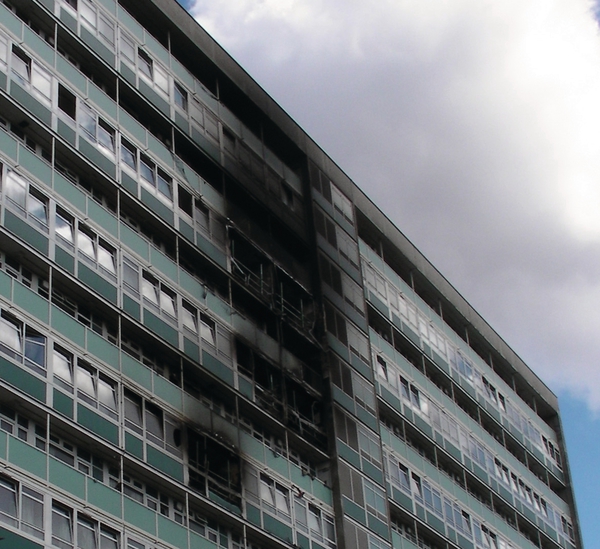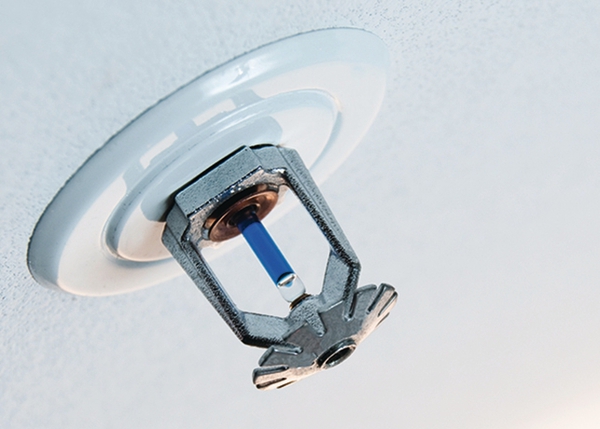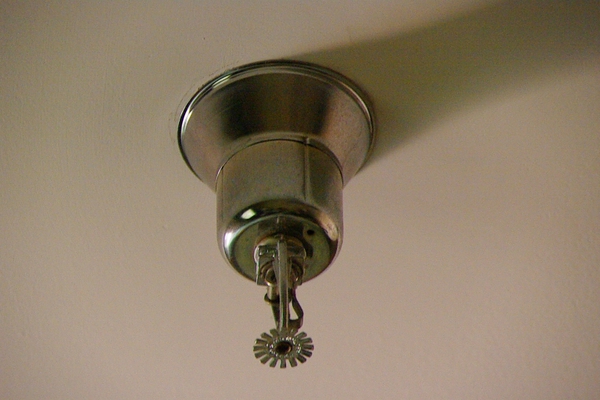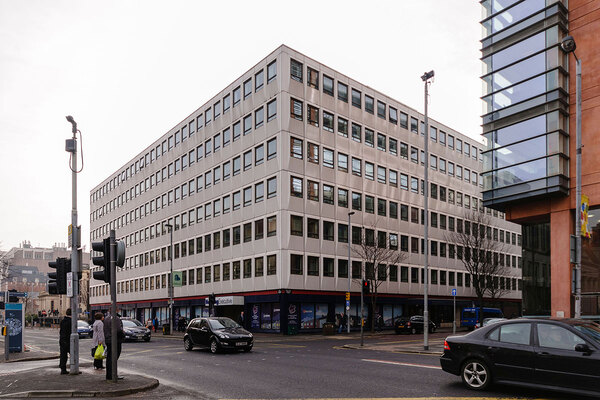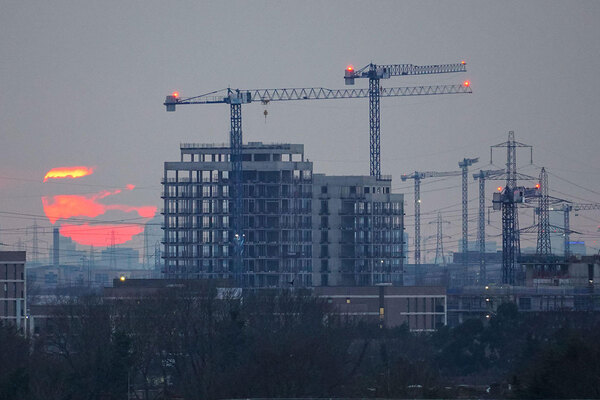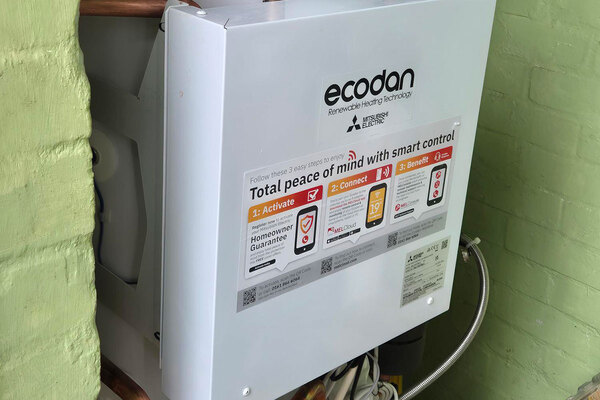Which councils are retrofitting high rises with sprinklers?
On the sixth anniversary of the deadly Lakanal House fire, an Inside Housing investigation finds that only a few councils are following the coroner’s recommendation and retrofitting their tower blocks with sprinklers. Kate Youde reports
At both inquests into these two fatal fires in local authority tower blocks, the coroners used their Rule 43 letters – recommendations to prevent future deaths – to say that social landlords should consider retrofitting sprinklers in high-rise blocks.
13% of English stock-owning councils have any sprinklers in high rise flats
The reason is clear: sprinklers save lives. Nobody has died in a fire in the UK at a property with ‘a properly installed sprinkler system working the way it’s meant to’, says Keith Brooks, head of prevention and protection at Cheshire Fire and Rescue Service and deputy spokesperson on sprinklers for the Chief Fire Officers Association (CFOA). Fires in tower blocks are more dangerous for firefighters, he adds, and sprinklers help keep them safe by controlling fire growth, keeping escape routes tenable and mitigating against ‘unseen’ risks such as tangled cables, which were highlighted as an issue during the inquest into the deaths of firefighters at Shirley Towers.
‘CFOA would obviously like to see the number of high-rise blocks with sprinklers increase,’ says Mr Brooks.
Yet an investigation by Inside Housing has found that, to date, only 13% of stock-holding councils in England with high-rise accommodation have sprinklers within any of their tower block flats.
A Freedom of Information request to 151 stock-holding local authorities found 87 (58%) own a combined total of 2,925 high-rise residential tower blocks, which are 18 metres or higher. Councils that did not know the height of their blocks in metres generally classified ‘high-rise’ as anything over five or six storeys.
Sprinklers recommended
Legally, there is no requirement for councils to retrofit sprinklers to these blocks.
The law
Building regulations in England require sprinklers to be installed to flats in new residential blocks over 30 metres in height. In Scotland, sprinklers are required in new blocks above 18 metres.
Wales has required sprinklers in buildings such as new and converted care homes, hostels and halls of residence of any height since April 2014. All new or converted homes must have sprinklers from January 2016.
There is no requirement to retrofit sprinklers to existing high-rise blocks.
However Keith Wiseman, the coroner for the inquest into the deaths of firefighters Alan Bannon and James Shears at 16-storey Shirley Towers in April 2010, suggested ‘social housing providers should be encouraged to consider the retrofitting of sprinklers in all existing high-rise buildings in excess of 30 metres in height’ – the height sprinklers are required in new build blocks in England.
Coroner Frances Kirkham also raised the retrofitting of sprinklers following the inquests into the deaths of Catherine Hickman, Dayana Francisquini, Thais Francisquini, Felipe Francisquini Cervi, Helen Udoaka and Michelle Udoaka at Southwark Council’s 14-storey Lakanal House in July 2009. In March 2013, she told the then secretary of state Eric Pickles the inquests had heard evidence that retrofitting sprinklers in high-rise blocks might be possible ‘at lower cost than had previously been thought’ and ‘with modest disruption to residents’.
£1,150 per flat - the cost of retrofitting sprinklers in a Sheffield pilot
A pilot in September 2011, funded by trade body the British Automatic Fire Sprinkler Association (BAFSA), at the 13-storey Handbank sheltered housing block on the Gleadless Estate at Callow Mount, Sheffield, had shown sprinklers could be retrofitted, without decanting tenants, at an average cost of just under £1,150 per flat.
Following the Shirley Towers and Lakanal fires, Southampton and Southwark Council’s unveiled plans to improve fire safety, including installing sprinklers. Southampton Council’s cabinet approved in February a £1m project to retrofit sprinklers to all flats and some communal areas within three of its 20 high-rise blocks, including Shirley Towers, with work expected to start this autumn.
Southwark Council has 317 tower blocks – the largest number of blocks reported by any council. As previously reported by Inside Housing, Southwark is installing sprinklers in existing sheltered housing schemes and temporary accommodation hostels by September 2016, and to such future blocks, as part of £48m of fire safety improvements. A report to the council’s cabinet in February suggested the work in 12 of 20 sheltered housing schemes, and seven of 19 temporary accommodation hostels, will be completed by this month.
But what steps have other local authorities taken to retrofit sprinklers to high-rise blocks?
In response to our Freedom of Information request, approximately one in four of the 87 councils with high-rise stock said they have sprinklers in areas such as bin stores, laundry rooms and car parks across a combined total of 187 blocks. The true total will be higher, however, because some councils do not count a bin store as a communal area. Therefore, one council that did reveal it had sprinklers in bin rooms didn’t give us a block-by-block breakdown, and there may be other authorities that didn’t tell us about sprinklers in these areas.
Retrofitting sprinklers
When asked whether they have sprinklers in each of their tower block flats, only 11 councils (including some of those with sprinklers in communal areas) said they have retrofitted sprinklers in some – not all – flats in a combined total of 18 blocks.
Cheshire West and Chester Council decided installing sprinkler systems was ‘the most effective way of improving fire safety within its tower blocks of flats’, following recommendations from Cheshire Fire and Rescue Service. Between July and December last year, it spent £338,642 retrofitting sprinklers to communal areas and 90 of the 151 flats in its three blocks at Joseph Groome Towers in Ellesmere Port.
However ‘no access and refusals’ have hindered the project. ‘A number of tenants declined to have sprinklers installed in their properties and this has prevented 100% installation to date,’ says John Outram, head of service for commissioning places at Cheshire West and Chester Council. ‘No action has been taken against the tenants who refused installation.’
It is to avoid issues with access and disruption to tenants that Runnymede Council is retrofitting sprinklers to flats within its only tower block – the 16-storey Surrey Towers in Addlestone – when they are either subject to major internal works, or at the time of re-letting. The authority adopted the policy a couple of years ago in consultation with Surrey Fire and Rescue Service after reviewing its fire risk assessment in light of the coroner’s ruling following the Shirley Towers blaze. It has fitted out 18 of the 95 flats so far, at a cost of approximately £1,200 per home, a sum that is probably easier to bear if you only have one high-rise block. By contrast, some of the city councils we surveyed have hundreds of tower blocks.
The Gateshead Housing Company, the arm’s-length management organisation managing nearly 20,000 homes on behalf of Gateshead Council, installed sprinklers to communal areas and 160 flats at 10-storey Regent Court – one of its 25 tower blocks – in 2013. It spent just over £800,000 on fire safety improvement works after a fire risk assessment found traditional compartmentation, a design strategy aimed at inhibiting the rapid spread of fire, would be ‘impractical’ due to this block’s particular layout.
However it is not just the design of blocks influencing councils’ decisions, but also the – often vulnerable – people living in them. Manchester Council installed sprinklers at the 16-storey Whitebeck Court in 2010 when it turned the empty high-rise block into an extra care facility, while Leeds Council is prioritising the installation of sprinklers in its sheltered housing tower blocks.
It spent £227,200 retrofitting sprinklers to the 13-storey Marsden Court in February last year and £320,000 on similar work at the 17-storey Queensview in January this year. It is due to finish installing sprinklers to the 17-storey Crescent Grange next month.
‘Individual landlords must assess the risk to their own stock and in many cases now the risk will be linked to the individual [resident] rather than the property,’ says housing consultant Jan Taranczuk, who does not believe the low percentage of local authorities with sprinklers in their high-rise flats is a cause for concern.
Flat-by-flat approach
With this in mind, some councils are taking a flat-by-flat, rather than block-wide, approach. Croydon Council installed sprinklers in five flats across four of its 39 tower blocks in April last year following a request from its adult care and disability service. The homes have portable sprinkler systems – installed on the basis of a client’s health and ability to evacuate a building by themselves – which are typically placed in the lounge and the bedroom, and can be removed and reinstated at a new property if the resident moves.
While it doesn’t have sprinklers in its 227 high-rise blocks, Camden Council spent £6,600 in September 2013 installing a ‘misting system’, which emits a high-pressure haze of water, within four flats occupied by ‘high-risk’ residents in its 19-storey Denton block. Steve Seaber, advisor on social housing to BAFSA, says questions remain about the effectiveness of mist systems, which were originally developed for use on ships, in residential settings because, as yet, there is not a published British standard for them, although one has been approved for publication.
“People think they go off when you burn your toast.”
Keith Brooks, head of prevention and protection, Cheshire Fire and Rescue Service
In addition to the 11 councils that have installed sprinklers to individual high-rise flats, a further four told us they have plans to do this. Among them is Oxford Council, which is currently selecting a contractor to undertake £18m of refurbishment works to its five tower blocks, including the installation of sprinklers to flats and ‘high-risk areas’ such as internal refuse stores, a ‘comprehensive and fully integrated’ fire detection and alarm system, and ‘extensive’ floor identification on walls and floors. Work is due to start at the beginning of 2016 and continue through to 2018.
As our survey did not ask about future work, there could be more tower block sprinkler projects in the pipeline. However, Mr Seaber says, ‘The biggest growth is in low-rise housing, particularly sheltered housing and where vulnerable people are being kept.’
Sheffield Council is using the learnings from its Callow Mount pilot to retrofit sprinklers to about 540 low-rise, timber frame, ranch-style maisonettes. The £1.4m, one-year works are due to finish in October.
‘I think £2,500 a flat is money well spent to actually improve the safety of our tenants and residents living in a non-traditional building where we hadn’t before been able to do all the works to provide a safe means of escape,’ says Janet Sharpe, director of housing at Sheffield Council. ‘It’s a significant amount of money but if we tried to retrofit lots of different fire safety measures, it probably would have equalled that cost.’
Ms Sharpe says there is a business case for sprinklers: the council once spent between £10,000 and £15,000 renovating a home following a fire, and also faced the costs of moving and re-homing the affected tenants.
Working together
A number of fire services are working with councils and housing associations on retrofitting sprinklers and providing funding towards the cost.
Mr Brooks, of the Cheshire Fire and Rescue Service, says: ‘While it’s reassuring that around a quarter of councils now have some sprinkler coverage in communal areas such as bin rooms in some of their premises, partial sprinkler coverage should not be seen as solving the problem of high-rise fires.
‘The value of sprinklers has obviously been recognised, but to secure all of the advantages they offer residents, owners and firefighters, a full system is the only solution.’
So, in the face of the benefits, what is stopping more councils from installing this potentially life-saving measure in their tower blocks?
The Chartered Institute of Housing (CIH) recommends landlords consider installing sprinklers into homes as part of their fire safety practice checklist. ‘However, we know that they have to balance this with cost considerations,’ says Laura Shimili, policy and practice officer at CIH.
Mr Brooks believes decision-makers are also put off by ‘myths’ about sprinklers. ‘People think they go off at once [rather than each sprinkler activating only when the temperature reaches a certain level], or they go off with a smoke detector when you burn your toast,’ he says.
‘I suspect they believe that a block will need decanting before installation can commence and that they activate or leak frequently, none of which is true. There is only a 500,000:1 chance of accidental activation through accidental impact.’
He adds: ‘Sprinklers will save lives in tower blocks. What we won’t know is how many, because people don’t die when sprinklers are installed.’

